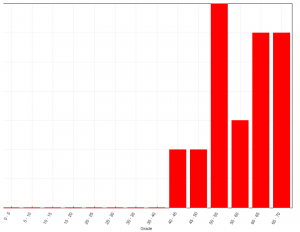The quiz feature of MOODLE 2.4 is the best online assessment tool that I have worked with as an educator. I started using the quiz feature of MOODLE 2.4 in 2013-2014 as a replacement formative assessment tool for a popular brand.
Prior to using MOODLE 2.4, to prepare my students for each unit test, I would assign several multiple-choice questions that would be electronically graded by the online program and the short answers I would grade by hand. Despite the benefit of providing updated Regents questions, I was limited by the type of questions that I could ask that would be electronically graded. I wanted a program that would give the students immediate feedback, along with providing the teacher with tools that assessed content knowledge using various styles of questions. Moreover, I wanted the assessment tool to facilitate the analysis of students’ assessment results.
MOODLE 2.4 offered these solutions. I was able to assess students’ performance using the following question styles:
1. Sentence Arrange
2. Labeling
3. Sentence Completion without Word Bank
4. Sentence Completion with Word Bank
5. Numeric Response
Each new question style provided students the opportunity to use different types of thinking skills that are not often measured in multiple-choice.
In addition, MOODLE generated easy to use color-coded item analysis spreadsheets of students’ results, which made it easier to pinpoint questions that student groups found problematic. These questions served as a teaching tool in subsequent reteaching exercises.
Also, I was able to observe a class’ performance displayed in a bar graph and a similar display was generated for a given class’ performance in comparison to the 8-grade cohort. Thus, it was easy to discern the number of students that were achieving mastery and those that needed targeted instruction. Often, I would partner these students to help each other during lunch tutorials in the cafeteria. In this mutualistic relationship, weaker students received additional instruction to master the content and stronger students reviewed and refined their understanding of already learned content to prepare for their summative assessments. Periodically, I would monitor the peer tutorial to assess if the partnership was truly productive for each partner and made modifications when necessary.
Because of MOODLE, I was using the limited time that classroom teachers have between formative assessment and reteaching where it was most beneficial: focusing only on the analysis and reteaching, rather than on the generation of the spreadsheets and graphs. All of these spreadsheets and graphs were being generated and updated by MOODLE as each student completed their assessment. A win for me since my administrators were advocating increase use of data analysis in the classroom.







